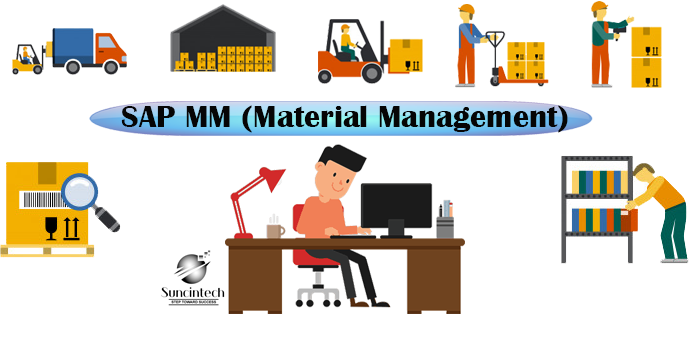Purchasing – SAP MM (Material Management)

Purchasing can be defined as the activity of acquiring goods or services to accomplish the goals of an organization.
The major objectives of purchasing are to:
- Maintain the quality and value of a company’s products
- Minimize cash tied-up in inventory
- Maintain the flow of inputs to maintain the flow of outputs
- Strengthen the organization’s competitive position
Purchasing may also involve:
- Development and review of the product specifications
- Receipt and processing of requisitions
- Advertising for bids/request for quotations
- Getting the price lists and maintaining the quotations
- Bid/Quotation evaluation
- Award of purchase order / supply contracts
Sometimes, evaluation of goods received and their proper storage/disposal is also part of the purchase process.
Based on the consumption purposes of the acquired goods and services, purchasing activities are often split into three categories or types.
- The first category being direct purchasing or purchase-for-stock.
- The second being indirect purchasing or purchase-for-consumption or purchase-to-order.
- The third being purchasing of services.
Direct Purchasing
It encompasses all items that are part of finished products, such as raw material, components and parts. It takes care of all the material requirements that are in constant need/demand. It will ensure that there are no delays in production activities due to lack of sufficient stock.
Indirect Purchasing
The activities here concern “operating resources” that a company purchases to enable its operations. It comprises a wide variety of goods and services, from standardized low value items like office supplies and machine lubricants to complex and costly products; like heavy equipment and assets.
Purchasing of Services
This relates to purchasing of services needed to carry on the operations of the enterprise. This might include house-keeping services, maintenance, consulting services, etc.
Purchasing managers/directors guide the organization’s purchasing procedures and standards. Most organizations use a three-way check as the foundation of their purchase programs. This involves three departments in the organization completing separate parts of the process. The three departments do not all report to the same senior manager, to prevent unethical practices and lend credibility to the process.
These departments can be purchasing, receiving and accounts payable; or engineering, purchasing and accounts payable; or plant manager, purchasing and accounts payable. Combinations can vary significantly, but a purchasing department and accounts payable are usually two of the three departments involved.
Topics covered under Purchasing:
I. Basics
• Concept explained
• Difference Between Purchasing and Procurement
II. Purchasing Cycle
III. Purchasing Documents
• Different types of documents used
• Division of Purchasing Documents in the SAP system
• Type of data maintained in each division of the purchase document
IV. Purchase Requisition
• Basics of Purchase Requisition
• Creation of Purchase Requisition
• Other End User activities of Purchase Requisition
V. Request for Quotation (RFQ)
• Basics of RFQ
• Creation of RFQ
• Other End User activities of RFQ
VI. Quotation
• Basics of Quotation
• Creation of Quotation
• Other End User activities of Quotation
VII. Comparison
• What is comparison
• Criteria for comparison in the real time and in the SAP system
• The comparison process
VIII. Purchase Order
• What is a Purchase Order
• Creation of Purchase Order with reference
• Creation of Purchase Order without reference
IX. Release Procedure
• Basics of Release Procedure
• Release Procedure and Approval process
• Release Characteristics
• Release Classes
• Release Groups
• Release Codes
• Release Indicators
• Release Strategies
• Releasing the Purchase Order through Release Procedure
X. Optimization
• Concepts of Purchase Optimization
• Prerequisites for creating a Purchase Order automatically
• Creation of Purchase Order automatically
XI. Outline Agreements
• Basics
• Contracts
Concepts
Quantity Contract
Value Contract
Creation of a Contract
Other End User activities of Contract
• Scheduling Agreements
Concepts
Creation of Scheduling Agreement
Other End User activities of Scheduling Agreement
Creation of Delivery Schedule
XII. Configuration
• Document Types configuration
• Assigning Number Ranges to Document Types
• Screen Selection for the Document Types
• Text Types and Copying Rules
• Tolerances for Archiving documents
About the Author:
This article has been written by one of our Elite tutors – Samba Siva. He has more than a decade of industry experience in the field of SAP. He has been teaching a lot of students worldwide at Uplatz.com
If you are looking for SAP MM 1:1 instructor-led training with real time experience, please get in touch with us at info@uplatz.com or call us at +44 7836 212635
About Us:
Uplatz.com is UK based leading marketplace for online 1:1 training courses primarily focused on SAP, Oracle, Big Data, and Digital Marketing.
Browse the our courses here
